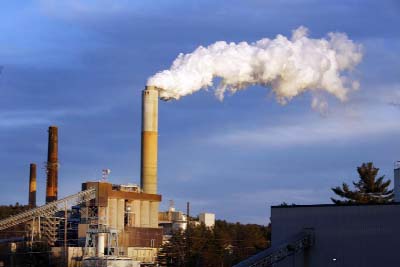
AP, New York :
President Barack Obama will impose even steeper cuts on greenhouse gas emissions from U.S. power plants than previously expected, senior administration officials said Sunday, in what the president called the most significant step the U.S. has ever taken to fight global warming.
A year after proposing unprecedented carbon dioxide limits, Obama was poised to finalize the rule at a White House event on Monday. In a video posted to Facebook, Obama said the limits were backed up by decades of data showing that without tough action, the world will face more extreme weather and escalating health problems like asthma.
“Climate change is not a problem for another generation,” Obama said. “Not anymore.”
Opponents vowed to sue immediately, and planned to ask the courts to put the rule on hold while legal challenges play out. Many states have threatened not to comply.
In his initial proposal, Obama had mandated a 30 percent nationwide cut in carbon dioxide emissions by 2030, compared to 2005 levels. The final version will require a 32 percent cut instead, said the officials, who weren’t authorized to comment by name and requested anonymity.
The final rule also gives states an additional two years – until 2022 – to comply, officials said, yielding to complaints that the original deadline was too soon. States will also have until 2018 instead of 2017 to submit their plans for how they’ll meet their targets.
But the administration will attempt to incentivize states to take action earlier by offering credits to states that boost renewable sources like wind and solar in 2020 and 2021, officials said.
The focus on renewables marks a significant shift from the earlier version that sought to accelerate the ongoing transition from coal-fired power to natural gas plants, which emit far less carbon dioxide. The revised rule aims to keep the share of natural gas in the nation’s power mix at current levels.
President Barack Obama will impose even steeper cuts on greenhouse gas emissions from U.S. power plants than previously expected, senior administration officials said Sunday, in what the president called the most significant step the U.S. has ever taken to fight global warming.
A year after proposing unprecedented carbon dioxide limits, Obama was poised to finalize the rule at a White House event on Monday. In a video posted to Facebook, Obama said the limits were backed up by decades of data showing that without tough action, the world will face more extreme weather and escalating health problems like asthma.
“Climate change is not a problem for another generation,” Obama said. “Not anymore.”
Opponents vowed to sue immediately, and planned to ask the courts to put the rule on hold while legal challenges play out. Many states have threatened not to comply.
In his initial proposal, Obama had mandated a 30 percent nationwide cut in carbon dioxide emissions by 2030, compared to 2005 levels. The final version will require a 32 percent cut instead, said the officials, who weren’t authorized to comment by name and requested anonymity.
The final rule also gives states an additional two years – until 2022 – to comply, officials said, yielding to complaints that the original deadline was too soon. States will also have until 2018 instead of 2017 to submit their plans for how they’ll meet their targets.
But the administration will attempt to incentivize states to take action earlier by offering credits to states that boost renewable sources like wind and solar in 2020 and 2021, officials said.
The focus on renewables marks a significant shift from the earlier version that sought to accelerate the ongoing transition from coal-fired power to natural gas plants, which emit far less carbon dioxide. The revised rule aims to keep the share of natural gas in the nation’s power mix at current levels.

